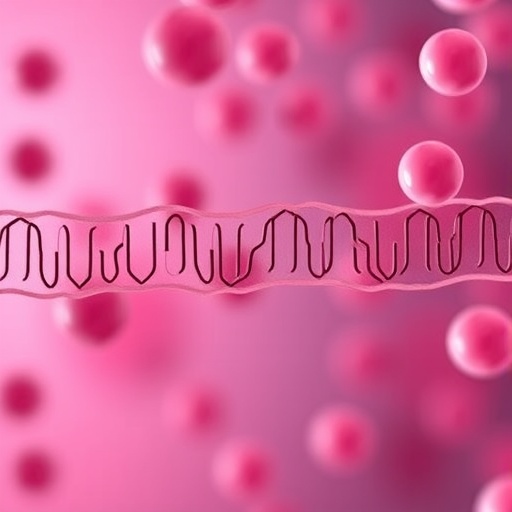
A recent groundbreaking study has unveiled a significant genetic factor contributing to female infertility, shedding light on the complexities of human reproduction and opening new avenues for scientific inquiry and potential therapeutic interventions. In the paper published by Sun et al., the researchers delve into a specific homozygous variant in the JARID2 gene that has been identified as a critical element impairing blastulation efficiency in female subjects. The implications of such discoveries are vast, resonating with researchers and clinicians dedicated to understanding the underlying causes of infertility.
The journey of this research began with the acknowledgment of the alarming rates of infertility affecting couples worldwide. Estimates suggest that one in six couples struggle with fertility issues, prompting a surge in scientific investigations aimed at discerning the myriad factors at play. Among the various genetic contributors, the focus on JARID2 reveals a crucial piece of the infertility puzzle, particularly as it relates to early embryonic development. This aligns with previous studies that have hinted at genetic abnormalities influencing reproductive outcomes but often left the underlying mechanisms poorly understood.
JARID2, a gene known to play an intricate role in gene regulation and chromatin remodeling, has significant implications for early embryonic development. When mutations or variants occur within this gene, the consequences can be profound. The study’s authors have meticulously documented how a specific homozygous variant within JARID2 leads to a reduction in the efficiency of blastulation—a critical phase in embryogenesis whereby a fertilized egg transforms into a blastocyst, capable of implantation in the uterine lining. This inability to reach the blastocyst stage can result in failed pregnancies, thus contributing directly to infertility.
Through a combination of genetic analysis, in vitro experimentation, and phenotypic assessment, the research team was able to correlate the presence of the JARID2 variant with observed deficiencies in blastulation efficiency. This correlation was not just statistically significant but biologically relevant, as the study meticulously charts the trajectory of embryonic development in the context of this genetic alteration. The implications extend beyond academic interest; they could directly inform the development of genetic testing protocols for aspiring parents facing unexplained infertility.
Moreover, the connection between genetic anomalies and infertility has been a topic of burgeoning interest within reproductive medicine. By identifying specific genetic variants such as JARID2, the potential for personalized medicine approaches in fertility treatment emerges. Doctors could tailor intervention strategies based on an individual’s genetic makeup, improving the chances of successful conception and pregnancy. This approach may also alleviate the emotional and financial burdens often accompanying infertility treatments, paving the way for more patient-centered care.
The scientific community’s response to the findings of Sun et al. has been overwhelmingly positive, indicating a readiness to explore the implications of this pivotal discovery further. Researchers specializing in reproductive genetics are now considering the broader significance of the JARID2 variant, particularly as it relates to other genes involved in embryonic development. There lies a rich tapestry of genetic interplay that, once unraveled, could reveal much about the mechanisms of human reproduction and the factors contributing to infertility.
In addition to the immediate impact on infertility research, this study reinforces the notion that understanding genetics is paramount in addressing complex human health issues. As researchers expand their investigations into the genetic underpinnings of infertility, they are also prompted to consider the environmental and lifestyle factors that may exacerbate genetic susceptibilities. The intersection of genetics with factors such as nutrition, stress, and environmental toxins poses a fascinating area for future inquiry and could lead to holistic approaches in treatment.
The intricate dance of genetic information is paramount in human development, and the findings related to JARID2 contribute to the growing narrative of how minute changes at the genetic level can lead to significant outcomes for individuals. The attention to JARID2 not only highlights the gene’s role in fertility but also serves as a case study in the importance of genetic research in understanding women’s health more broadly. It reminds us of the complexities inherent in reproductive biology and the critical need for continued exploration.
The potential ramifications of this research extend to clinical practice as well. With a deeper understanding of the JARID2 variant and its specific impact on fertility, healthcare providers may soon be armed with new tools for diagnosis and treatment options. The possibility of utilizing advanced genetic screening techniques to identify women at risk due to JARID2 variants provides an exciting frontier. As these advancements materialize, they hold the promise of changing the landscape of fertility treatments for the better.
As we move towards an era where genetic testing becomes increasingly commonplace in fertility assessments, the revelations from Sun et al. could act as a catalyst for wider acceptance of such technologies. The apprehension some individuals may feel regarding genetic testing could be mitigated by the tangible benefits outlined in research such as this. The importance of informed choice and personalized treatment plans cannot be overstated, and it is studies like this that provide the evidence base necessary for informed policy decisions in reproductive healthcare.
In conclusion, the research conducted by Sun et al. on the homozygous variant in JARID2 expands our understanding of the genetic factors underlying female infertility. As scientists continue to investigate the complexities of reproductive health, findings such as these not only deepen our knowledge but also inspire hope. The science of fertility is evolving, and with each new discovery, we move closer to addressing the heart-wrenching challenges that many face in their journeys to parenthood. This study exemplifies the powerful role of genetics in human health and underscores the importance of persistent inquiry in the quest to alleviate infertility.
The journey toward solutions rooted in scientific understanding is gradual, but the revelations surrounding the JARID2 gene mark a pivotal moment in reproductive genetics. As researchers forge ahead, the fusion of knowledge, innovation, and compassionate care will be essential in transforming the landscape of fertility treatment, ultimately enhancing the prospects for countless individuals and couples yearning to embark on the journey of parenthood.
Subject of Research: Female infertility and genetic factors associated with JARID2 variant.
Article Title: Homozygous variant in JARID2 causes female infertility characterized by compromised blastulation efficiency.
Article References:
Sun, J., Hu, H., Meng, F. et al. Homozygous variant in JARID2 causes female infertility characterized by compromised blastulation efficiency.
J Ovarian Res 18, 199 (2025). https://doi.org/10.1186/s13048-025-01783-3
Image Credits: AI Generated
DOI: 10.1186/s13048-025-01783-3
Keywords: Female infertility, JARID2, blastulation, genetic factors, reproductive health, embryonic development.
Tags: blastulation efficiency impairmentchromatin remodeling and reproductionearly embryonic development geneticsfemale infertility researchgenetic abnormalities and reproductive outcomesgenetic contributions to fertility issuesgenetic factors in reproductioninfertility causes and treatmentsinfertility rates worldwideJARID2 gene variantreproductive health studiestherapeutic interventions for infertility




